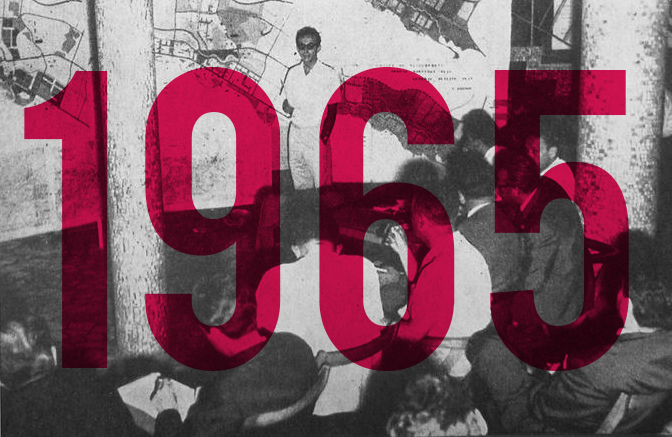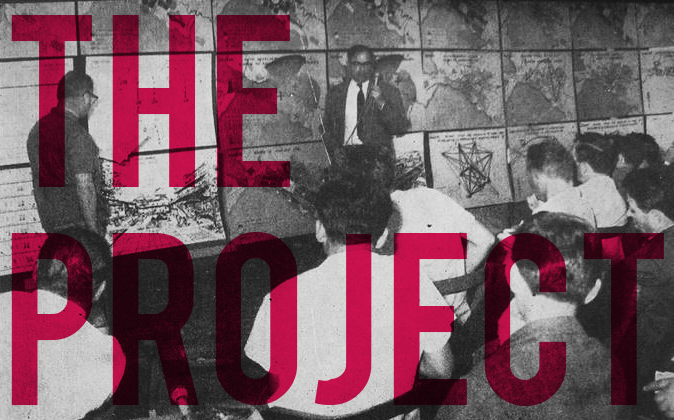THE
SKOPJE
PROJECT
THE
SKOPJE
PROJECT
Skopje – the World City
On the morning of July 26, 1963, Skopje was struck by a devastating earthquake that left more than 80% of buildings in ruins. This unfortunate event was followed by an unprecedented effort by United Nations to reconstruct and redesign the city. The city of Skopje was to be considered an international symbol of solidarity as it was rebuilt from the ruins with the aid of almost 90 countries. It was a unique opportunity to demonstrate the ability of the International community led by the United Nations for a much larger endeavor of constructing the role model of the future city – the “world city”.
The United Nations had recognized and understood the potential of Skopje’s situation embodied in the figure of Ernest Weissmann, a pioneer of Yugoslav modernism who at the time of the earthquake was the vice-director of Economic and Social Council (ECOSOC) at the United Nations, and who later become the key figure in the process of reconstruction of Skopje chairing the International Board of Experts. He committed himself to transform the city into a place where it would be possible to bring together the most successful international experts and that this would show that the only alternative to the destruction was in collaborative planning. In his opinion, a city built on such premises would eventually become the highest expression of world civilization. The main idea was “to modernize” Skopje and to turn it into the “world city” in order to show to the international community how planners can achieve a better life for the many.
The idea of the “world city” had been brought to his attention during his work in the late 1920’s at the Paris office of Le Corbusier and Pierre Jeannerette, whie working on the avant-garde proposal for the competition for the League of Nations in 1926. It coincided with the Le Corbusier’s collaboration with Paul Otlet, Belgian peace activists and lawyer and their unrealized project for Mundaneum and the cite mondiale. This was the city that should become the centre of universal knowledge through which humanity will ensure the world’s peace and wellbeing of all and dealing with the consequence of the previous world war just like the League of Nations. Weissman saw the opportunity in the post-earthquake reconstruction of Skopje to create the “world city”, the city that should be seen as the epicenter of knowledge that would promote peace, understanding and collaboration. This has become the Skopje Project and these goals were to be achieved through architecture and urban planning.
The Power of Architecture
In the days after the earthquake, Skopje has become a field of coexistence and collaboration that reversed the negative preconception and the confrontation of the Cold War era. The Skopje earthquake and following reconstruction occurred at a moment in time when few would believe that a global level of universal solidarity could be achived. that was crippled by a tremendous politically and military divided within the Cold War context and led few people to believe that it ultimately played a significant role in preventing a disaster on a global level through promotion of universal solidarity. This message was further elaborated and the city, once rebuilt, was supposed to show the governments worldwide that only through unconditioned collaboration and through the sharing of knowledge would it become possible to create an environment suitable for the entire humankind. The reconstruction of Skopje has become a political project aimed at providing a model of social justice through the process of redesigning the city.
The establishment of a network of international architects through an international invited competition for the reconstruction of the centre of the city was an opportunity to transform the process of city reconstruction into a world project; the city became the fertile ground for architecture and urban planning ideas showcasing the power of architecture to transform not just cities but societies, too.

The project for reconstruction of the city of Skopje represented the occasion for world architects and urban planners to accomplish a truly world project, the collaborative project promoting the universal values of humanity achieved through the tools and instruments of architecture and collaboration. The Skopje project demonstrated the importance of architecture as a collaborative effort in a divided world by promoting the belief that the construction of the human habitat is a humane way to solve socio-political and economic obstacles of the contemporary world.
Following this idea, a number of world architects were invited to Skopje, including Kenzo Tange from Japan, Jaap Bakema and Van den Broek from Holland and Constantin Doxiadis from Greece, to contribute to this effort with their ideas, plans and designs. The reconstruction of Skopje enabled Tange to demonstrate the true potential of Metabolist architecture, Bakema’s Open Society, and Doxiadis’s Ekistics theory. They shared the belief that cities and societies can be designed and reconstructed through ideas and concepts that are inherent to architecture and urban design, and which are deeply humanistic. However, sixty years after the adoption of Kenzo Tange’s plan for the center of Skopje, the legacy of this international project led by UN remains relatively unappreciated. It was anticipated that once the reconstruction would be completed, and given the engagement of such eminent designers, the city would provide solutions to the contemporary “urban crisis”, would prescribe a cure for the “sick cities”, and show the way for the “humanization” of the built environment. Even though mostly unattained, these ambitious goals gave life to an international debate about the future of both cities and planning.
Revisiting the idea of the power of architecture and urban design as the drivers of reconstruction of the societies and bringing upfront again the ideas of international solidarity and support of cities that have been challenged by natural or man-made destructions, process of sharing the knowledge and expertise for climate crisis and war torn apart communities in a process led by international organizations is in the core of The Skopje Project Conference.

